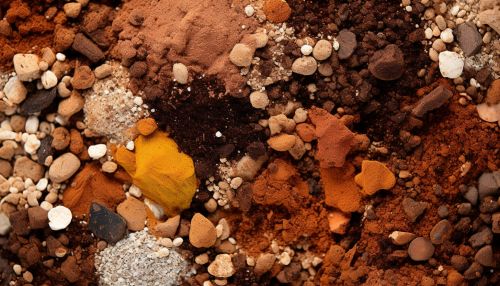The Chemistry of Soil Nutrient Availability and Plant Uptake
Introduction
Soil chemistry is a complex field that involves the study of chemical processes within the soil environment. This includes the availability and uptake of nutrients by plants, which is a critical aspect of soil fertility and plant nutrition. The availability of nutrients in the soil is influenced by various factors such as soil pH, cation exchange capacity, and the presence of other elements or compounds.


Soil Nutrient Availability
The availability of nutrients in the soil is determined by the chemical reactions that occur between the soil particles and the soil solution. These reactions can either release nutrients into the soil solution, making them available for plant uptake, or they can immobilize nutrients, making them unavailable.
Soil pH
The pH of the soil plays a crucial role in nutrient availability. Most nutrients are more available in slightly acidic to neutral soils (pH 6-7). When the soil pH is too high (alkaline) or too low (acidic), certain nutrients become less available. For example, iron and manganese become less available in alkaline soils, while phosphorus becomes less available in highly acidic soils.
Cation Exchange Capacity
The cation exchange capacity (CEC) of the soil is another important factor in nutrient availability. CEC is a measure of the soil's ability to retain and supply cations (positively charged ions) to plant roots. Soils with a high CEC, such as clay soils and organic soils, can hold more nutrients and are generally more fertile than sandy soils, which have a low CEC.
Presence of Other Elements or Compounds
The presence of other elements or compounds in the soil can also affect nutrient availability. For example, the presence of aluminum or iron oxides can immobilize phosphorus, making it unavailable to plants. Similarly, high levels of calcium can interfere with the availability of potassium.
Plant Nutrient Uptake
Plants take up nutrients from the soil through their roots. This process involves both passive and active mechanisms. Passive uptake occurs when nutrients move into the root along a concentration gradient, while active uptake involves the use of energy to transport nutrients against a concentration gradient.
Root Architecture and Nutrient Uptake
The architecture of the plant root system plays a significant role in nutrient uptake. Plants with extensive root systems are able to explore a larger volume of soil and access more nutrients. Root hairs, which are extensions of root cells, increase the root surface area and enhance nutrient uptake.
Nutrient Transporters
Plants have specialized proteins, known as nutrient transporters, that facilitate the uptake of nutrients. These transporters are located in the plasma membrane of root cells and they bind to specific nutrients, transporting them into the cell.
Mycorrhizal Associations
Many plants form symbiotic associations with mycorrhizal fungi, which can enhance nutrient uptake. The fungi colonize the root system and extend into the soil, effectively increasing the root surface area. In exchange for carbohydrates from the plant, the fungi provide the plant with nutrients, particularly phosphorus.
Interactions Between Soil Chemistry and Plant Nutrition
The chemistry of the soil and the nutrition of plants are intricately linked. The availability of nutrients in the soil directly impacts the ability of plants to take up those nutrients and, therefore, their growth and development.
Soil Fertility and Plant Health
Soil fertility, which is largely determined by the availability of nutrients, is a key factor in plant health. Nutrient deficiencies can lead to various symptoms in plants, such as yellowing leaves (chlorosis), stunted growth, and reduced yield. Conversely, excessive levels of certain nutrients can be toxic to plants.
Nutrient Cycling
Nutrient cycling is a fundamental process in ecosystems, involving the transformation and movement of nutrients through the soil-plant-atmosphere system. Plants take up nutrients from the soil, use them for growth and development, and return them to the soil when they die and decompose. This process helps to maintain soil fertility and ecosystem productivity.
Conclusion
Understanding the chemistry of soil nutrient availability and plant uptake is essential for managing soil fertility and promoting plant health. By manipulating factors such as soil pH and cation exchange capacity, it is possible to improve nutrient availability and enhance plant nutrition. Furthermore, knowledge of plant nutrient uptake mechanisms can inform strategies to optimize nutrient use efficiency and reduce the environmental impact of agriculture.
